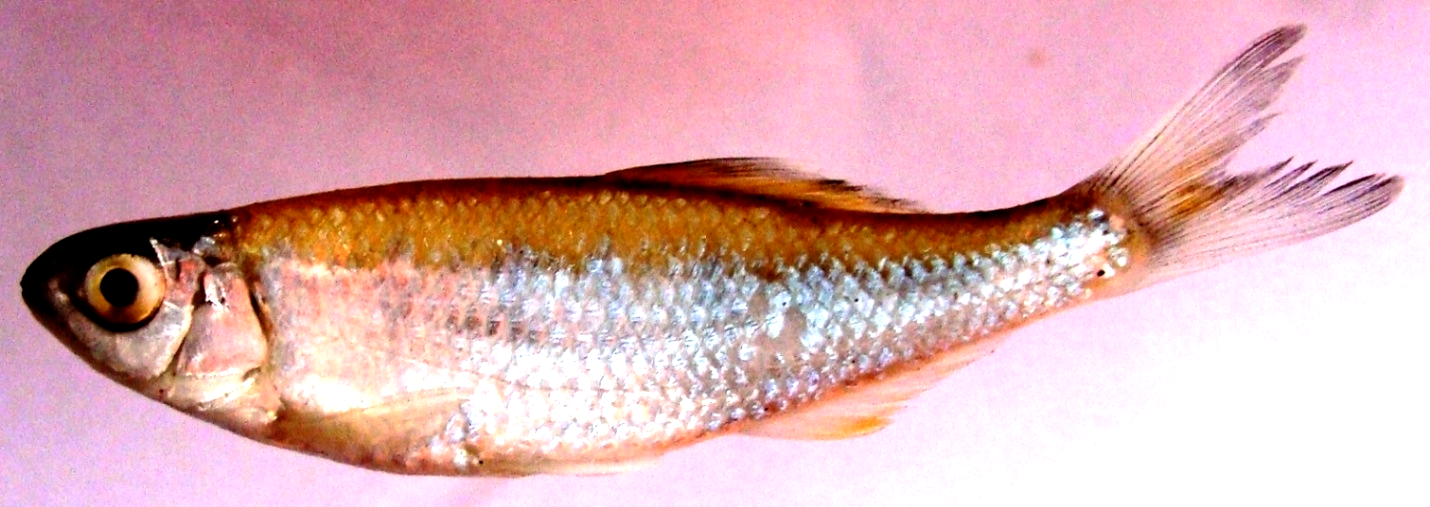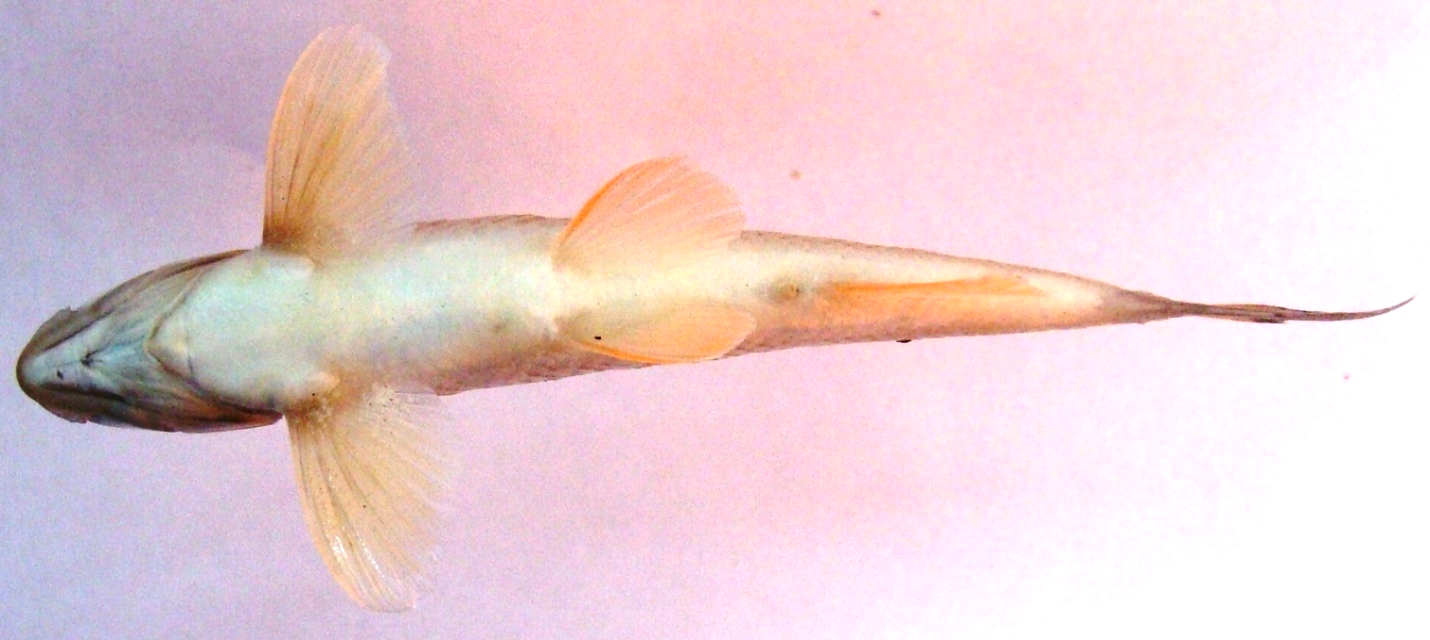SEGREGATION OF GENUS/SPECIES BASED ON THE CRITERIA DECIDED IN THE FIELD FOR THE SAMPLE INDIVIDUALS OF LOT – 13
The sample individuals, placed and labeled as Aspidoparia under Lot – 13, are found having appropriate characterization to include them under Genus – Aspidoparia [Family – Cyprinidae; Subfamily – Rasborinae or Danioniae], characterized as under:
· Body elongated, subcylindrical, compressed laterally. Dorsal and ventral
profiles equally arched. Head short, with rounded to obtuse snout and broad ring of suborbital bones. Barbels absent. Mouth small, inferior, with thin lips; the lower jaw being without a lip but with a sharp crescentic horny cutting edge. Eyes large, more towards snout end. Dorsal fin originates opposite pelvic base or opposite midway of pelvic and anal fin bases. Lateral line (38 – 60 scales) sharply curved downwards up to above pelvic fin base and then running up to lower half of caudal peduncle. Scales silvery and deciduous.
………………. Genus: Aspidoparia
SEGREGATION OF SPECIES
The individuals put under Genus: Aspidoparia are found belonging to 2 species, characterized as under:
a Dorsal fin originates opposite pelvic base. Snout obtuse. Lateral line scales 38 – 42. Caudal fin lobes almost equal. Colour pinkish-silvery along flanks, dark brown along the dorsum forming a burnished streak (in about upper 1/4th of body) from nape up to the base of upper lobe of caudal fin; fins with pinkish hue; bright turmeric-yellow along the throat and whole belly region including the bases of paired and anal fins, so much so that turmeric-yellow mucous is seen left behind when handled live.
………… Aspidoparia morar
[= Cabdio morar, vide indiabiodiversity.org>species> & www.fishbase.in>]
PHOTOGRAPHS OF Aspidoparia morar


Dorsal fin originates opposite midway of pelvic and anal fin bases (more towards pelvic base). Snout bluntly rounded. Lateral line scales 50 – 60. Lower lobe of caudal fin longer. Colour silvery, pinkish-yellow along flanks and belly, brownish-yellow along the dorsum forming a wider (as compared to A. morar) light brownish streak (in about upper 1/4th of body) from behind the nape (which is much darker) up to the base of upper lobe of caudal fin; fins with orange-yellow hue; dorsal and caudal fins edged black.
………. Aspidoparia jaya
PHOTOGRAPHS OF Aspidoparia jaya


HABITAT PREFERANCES BY Aspidoparia sp.
Both Aspidoparia morar and Aspidoparia jaya are common in the relatively slow moving sections of rivers of Eastern Doon (Song and Suswa), A. morar being more common. Western Doon has been found inhabited by A. morar in Asan river. Interestingly, both the species can be found frequently amongst the catches of Barilius sp. (Lot – 3), sharing similar habitat characteristics.



CLICK HERE FOR Lot – 3, TO VIEW MORE PHOTOGRAPHS FOR HABITAT PREFERENCES
